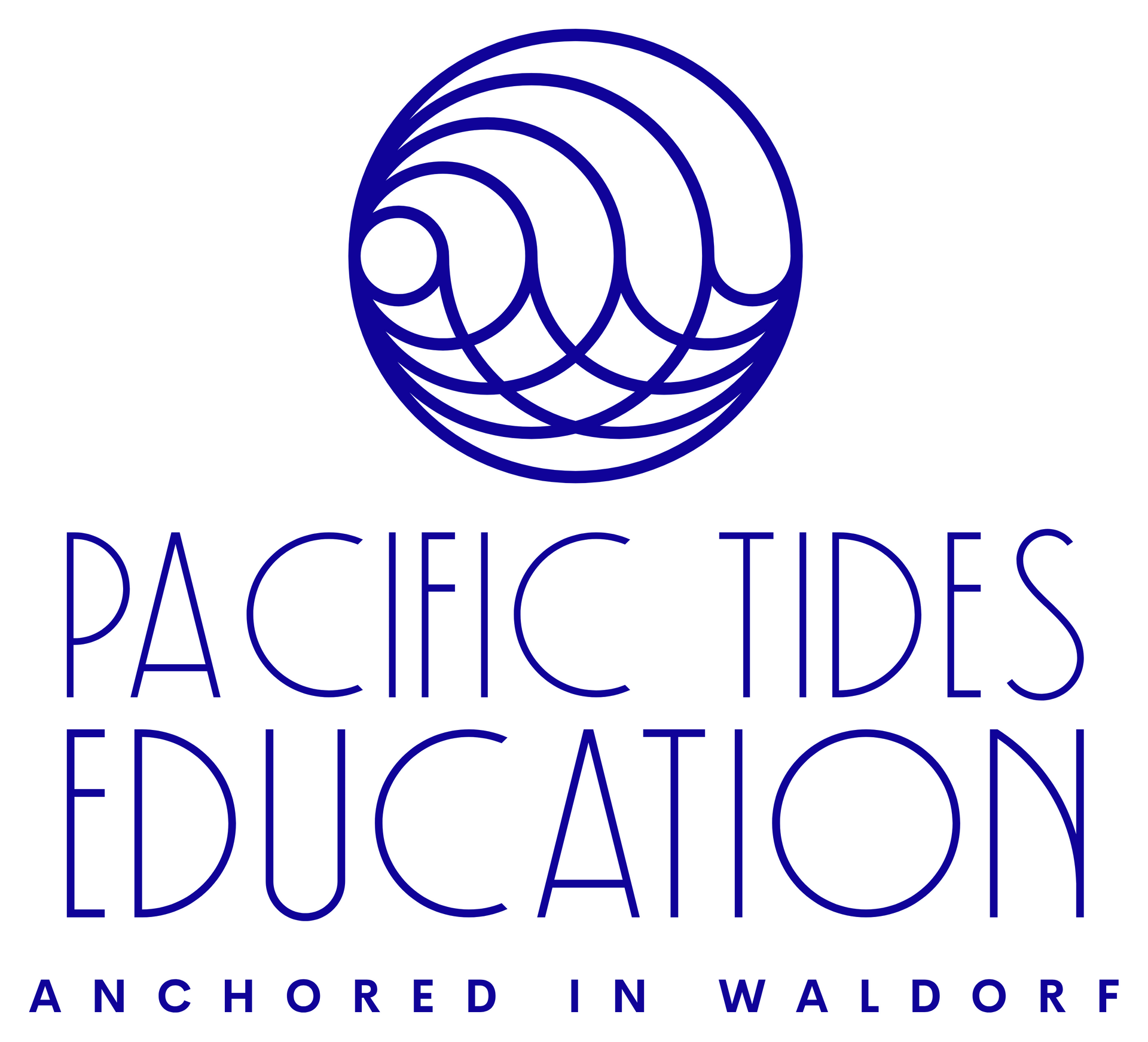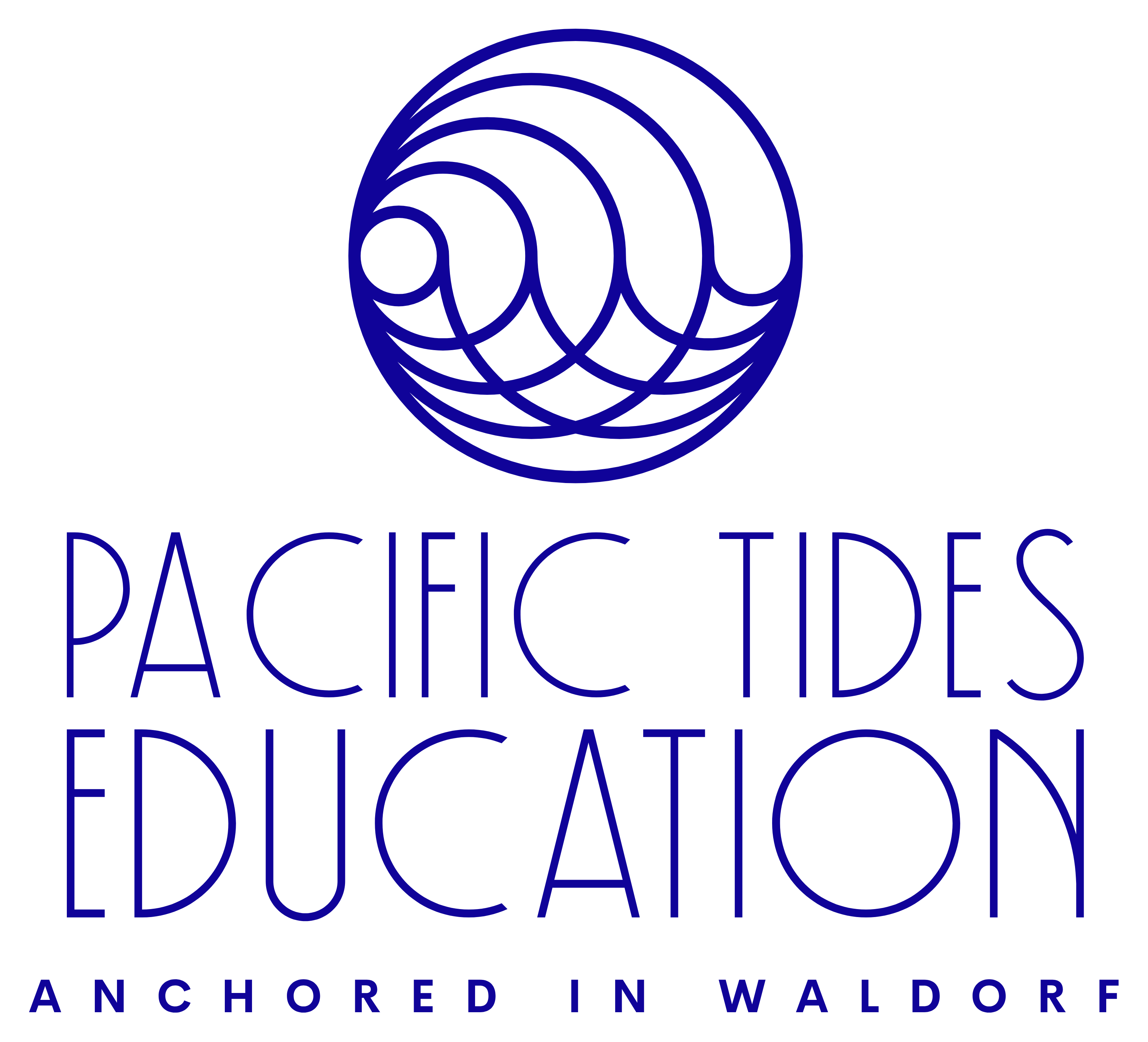Nature-Based Learning in Waldorf Education: Living Lessons
Geometry by the Sea
Waldorf education recognizes the profound impact of nature on a child’s development. When lessons move outdoors—into gardens, parks, and, for us in Cayucos, onto the beach—children experience learning as a living process. Nature-based education is not just an enhancement to the Waldorf curriculum; it is a vital, embodied expression of it.
The Pedagogical Roots of Nature-Based Geometry
Rudolf Steiner emphasized that young children learn best through direct experience, movement, and sensory engagement. Geometry, in particular, is rooted in the will and the senses before it becomes an intellectual pursuit. By bringing geometry into nature, we allow students to encounter form, space, and proportion with their whole being—moving, measuring, and creating in harmony with the world around them.
From Whole to Parts: Discovering Geometry on the Shore
Some of our most memorable main lessons DURING OUR GEOMETRY BLOCK have taken place right on the sands of Cayucos. Our approach to geometry follows the Waldorf principle of moving from the whole to the parts, from the grand and experiential to the precise and detailed.
On our first day, we began with the largest possible gesture: drawing enormous circles in the sand using driftwood. Children worked together, feeling the arc of the movement in their arms and legs, seeing the unity and perfection of the circle emerge beneath their feet. The experience was joyful and communal, grounding the concept of “wholeness” in their bodies and the natural world.
The next lesson added a new element—a long piece of string. With this, we explored diameter, radius, and the division of the circle, ALL WHILE INTRODUCING THE CONCEPTS OF MAKING A CIRCLE MORE AND MORE PERFECT WITH THE USE OF TOOLS. Children stretched the string across the sand, marking halves and quarters, experiencing geometric relationships physically and visually. The act of dividing space became a collaborative exploration rather than a set of abstract rules.
We then took our work further, THE CLASS constructED a giant compass with MULTIPLE PIECES OF DRIFTWOOD and string THROUGH THEIR OWN UNIQUE DESIGN. COLLABORATING THROUGH ONE ANOTHER'S IMAGINATION, STUDENTS CREATED A PROTOTYPE AND inscribed perfect circles on the sand. THIS EXPERIENCE ALLOWED STUDENTS TO orient THEMSELVES to the cardinal directions, and discussed the beauty and logic of geometric forms found in nature. Each child played a part—holding, measuring, walking the arc—making the learning process active and memorable.
Back in the classroom, we brought these experiences to a more intimate scale. Using compasses and colored thread, students recreated the forms they had made on the beach, crafting geometric string art and practicing compass work on paper. This progression—from the large and communal to the small and individual—mirrored the child’s journey from THEIR lived experience.
Why Nature Matters in Waldorf Geometry
Nature-based geometry lessons do more than change THE CHILD'S PERSPECTIVE ON THE PATTERNS OF OUR WORLD; they transform the experience OF MATHEMATICS. Outdoors, children move freely, observe natural symmetry, and encounter geometry in the living world—whether in the spiral of a shell, the arc of A TREE BRANCH, or LINE OF THE HORIZON, The nature becomes a canvas FOR LIVING LESSONS.
This approach also cultivates adaptability and presence in the teacher. When the weather shifts or a lesson is interrupted by a seagull’s call, one must adjust and embrace the unexpected. These moments of curiosity and flexibility become integral parts of the curriculum, nurturing wonder and an appreciation for learning.
Living Curriculum, Living Children
OUR consistant time in nature has shown how children thrive when learning is rooted in EXPLORATION, CURIOSITY, WONDER, IMAGINATION, and movement. Geometry becomes not just a subject, but a living experience—one that fosters reverence for the natural world around us. Students remember these lessons not only in their minds, but in their bodies and hearts.
For Fellow Waldorf Educators
As Waldorf teachers, we are called to create living connections between curriculum, children, and the world. Nature-based geometry is a powerful way to do this—inviting students to discover form, order, and beauty through their own exploration. Whether you teach by the sea, in a meadow, or on a city playground, may you always find inspiration in the rhythms of the earth.



